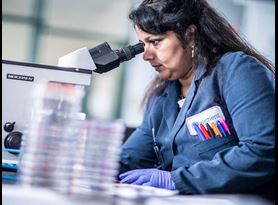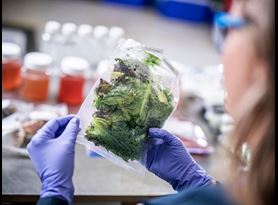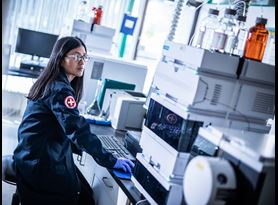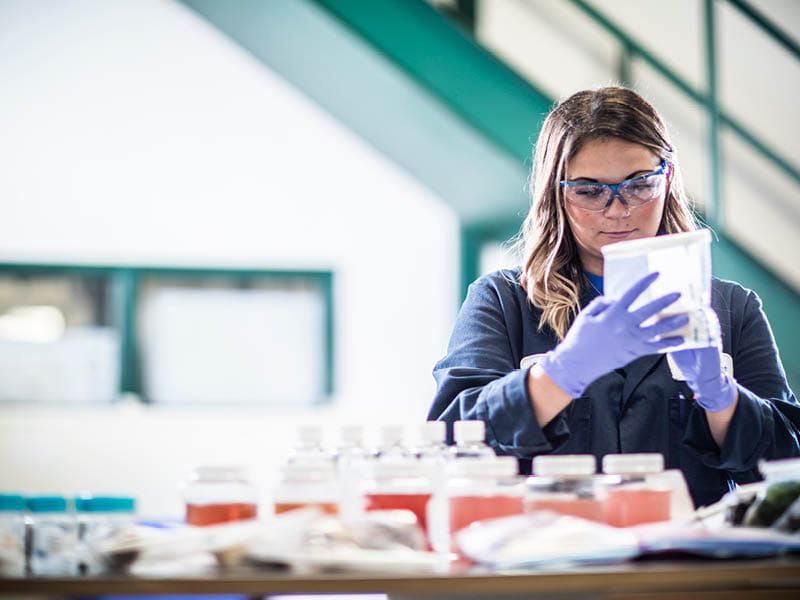In order to comply with regulatory (local, state, and federal) and retailer requirements, a wide range of products, including foods and beverages, pet food and animal feed, supplements, nutraceuticals and more, must undergo shelf-life testing to determine expiration dates, best-by dates, and sell-by dates.
We'll help you ensure product quality and safety and determine shelf life for a variety of product types. Element's full range of capabilities to help you make certain of your product’s stability over its entire shelf life. Our consultative scientists have years of experience testing products stored in a wide range of packaging, including freeze-dried, vacuum-packed (sous vide), reduced oxygen packed (ROP) and modified atmosphere packaging.
Given the substantial storage capacity that is available, a multitude of products and various storage conditions can be accommodated, including frozen, refrigerated, and ambient shelf-life studies. Accelerated shelf-life testing is also available, however accelerated conditions may kill the very spoilage bacteria the study is designed to detect. Our consultative scientists can help you determine whether accelerated conditions are right for your study. With extensive experience with ISO, CTFA, Colipa USDA and FDA protocols, our bespoke shelf-life study programs are designed to meet the unique characteristics of each product tested, as well as regulatory requirements. The following critical factors are typically considered when developing and tailoring shelf-life testing protocols:
- Microbiological risk parameters
- Spoilage indicator organisms
- Water activity and pH
- Label claims
- Rancidity
The Element advantage
In addition to shelf-life studies on market-ready products, including food and dietary supplements, Element also offers microbial challenge studies to better detail microbial risk or spoilage potential for new products going to the market.
To learn about our shelf life testing services, or to speak with one of our experts, contact us today.
Food shelf-life frequently asked questions
What is a product’s “shelf life”?
A food product’s shelf life is the period after processing and packaging during which a product retains its sensory, functional, physical, and microbiological properties under normal/recommended storage conditions. All foods have a shelf life, and the length of “life” depends on storage conditions.
Why do I need a shelf-life study for my food products?
Food shelf-life studies ensure customer satisfaction and brand protection. They also help food manufacturers understand how storage conditions affect the quality of the product over time, in addition to providing valuable data to R&D teams for formulation improvement.
Manufacturers provide date codes on their labels to help consumers and retailers decide when food is of best quality. Except for infant formula, dates are not an indicator of the product’s safety and are not required by US federal law.
However, states can adopt the FDA Food Code which provides guidelines for retailers on shelf-life limits of in-store produced products. The Food Code states that retailers selling foods produced, packaged, held and distributed by a federally inspected facility can use what is on the product label as the shelf life of those products. If the retailer opens these products to use for in-store made products (e.g., made to order deli items and smoothies), there are stricter limits as to the shelf life of those items. There are also governmental requirements in many other countries such as the UK, Europe, Australia, and New Zealand.
What does a shelf-life study tell me?
A shelf-life study tells you at what point in time (at a set storage temperature) your product no longer is acceptable. Furthermore, a well-designed shelf-life study demonstrates whether your product, as formulated, meets or exceeds your company’s standards and the expectations of customers for high-quality products.
A shelf-life study also provides information about how a product changes physically, chemically, and microbiologically over time – all of which can affect the sensory quality of a product.
Can I tell if a food product is safe by completing a shelf-life study?
Most shelf-life studies are designed to indicate spoilage, not safety. Many products will spoil before they become potentially unsafe from pathogen growth. Spoilage bacteria, yeast and molds compete for nutrients with pathogens, reducing the likelihood of growth and potential toxin formation (i.e., botulism toxin). Spoilage of food can have a negative economic impact on the sale of food products and has the potential to damage brand reputation.
Food manufacturers implement strict Good Manufacturing Practices (GMPs), Hazard Analysis Critical Control Points (HACCP) plans and Food Safety Plans (FSPs) that address potential pathogen contamination, greatly reducing the risk of potential food poisoning.
When do I need to run a shelf-life study?
Food shelf-life studies need to be completed:
- When a new product is developed;
- When an existing product has been reformulated or a change in the process;
- When the current shelf life is extended, and/or
- When an existing shelf life needs to be validated.
What do I need to test for in a food shelf-life study?
What needs to be tested depends on the product and storage conditions. A knowledgeable food microbiologist can help determine the most appropriate tests. Typically, shelf-life studies test for spoilage organisms:
- Aerobic Plate Count (APC) – A general indicator of overall processing and product quality.
- Total Coliform Count/E. coli – An indicator of proper processing and product handling after processing (e.g., using cleaned and sanitized equipment, gloved hands, immediate refrigeration/freezing storage, etc.).
- Yeast and Molds – Spoilage indicators of many perishable foods (e.g., fruits and vegetables, processed meats and chesses, breads, etc.).
- Psychrotrophic Plate Count – Psychrotrophic bacteria only grow at refrigerated temperatures and lead to product spoilage.
- pH – A measurement of how acidic a product is, which influences food safety and quality. The growth of foodborne pathogens can be prevented when acidity levels are sufficient.
- Water Activity (aw) – Determines how much free how much free available water is present in food for microbial growth. Low water activity foods include crackers, cookies, and spices while high water activity foods include milk, fresh fruits and vegetables.
How can I maximize the shelf life of my food product?
The shelf-life of food products can be maximized by:
- Using high quality raw ingredients;
- Using processed ingredients to ensure the product is safe (e.g., pasteurized eggs instead of raw eggs);
- Acidifying the product to below 4.6 (e.g., adding vinegar);
- Reducing the amount of available water for microbial growth, as measured by water activity (aw), to below 0.85. This can be done through adding salt, sugar or drying (e.g., beef jerky);
- Adding preservatives such a potassium benzoate to control molds;
- Refrigerating perishable products, and/or
- Carrying out pasteurization, cooking, drying, high pressure pasteurization (HPP), and/or thermal processing in hermetically sealed containers (e.g.., cans, bottles and pouches).
What is the difference between “sell by” and “best by” statements?
"Sell by" is generally used when the product is "microbiologically sensitive." These products have been formulated without preservatives and have a more neutral pH and high-water activity, allowing the growth of potential pathogens and spoilage bacteria. Examples include dairy products, ready-to-eat (RTE) prepared deli salads, sandwiches, and the like.
“Best by” labels are found on products formulated for safety. These foods are not considered as “microbiologically sensitive”, where if the consumer were to use the product past that date, a loss of quality maybe noticed. Examples are spices, breads, hard cheeses, etc.
When determining labeling requirements, it is important to check with local and state regulations to ensure compliance.
Where should I have my food shelf-life study conducted?
Chemistry and microbiological studies should be conducted by a well-trained, ISO 17025 certified laboratory. Get in touch with Element’s food experts today.
Learn more

Food Allergen Testing
Element offers industry standard and specialized food allergen testing to confirm the presence or absence of allergens using the Enzyme-Linked Immunosorbent Assay (ELISA) method.

Food Quality and Safety
Element's food safety testing will help ensure that your food product is safe, quality, and fit for the public.

Nutrition Label Testing
Element’s food nutrition testing laboratories offer nutrition label testing to create and verify nutrition facts panels according to FDA and USDA requirements.

Food Microbiology
Element provides food microbiology services for common foodborne pathogens, food spoilage organisms, and mycotoxins to HACCP, SQF, and R&D programs.

